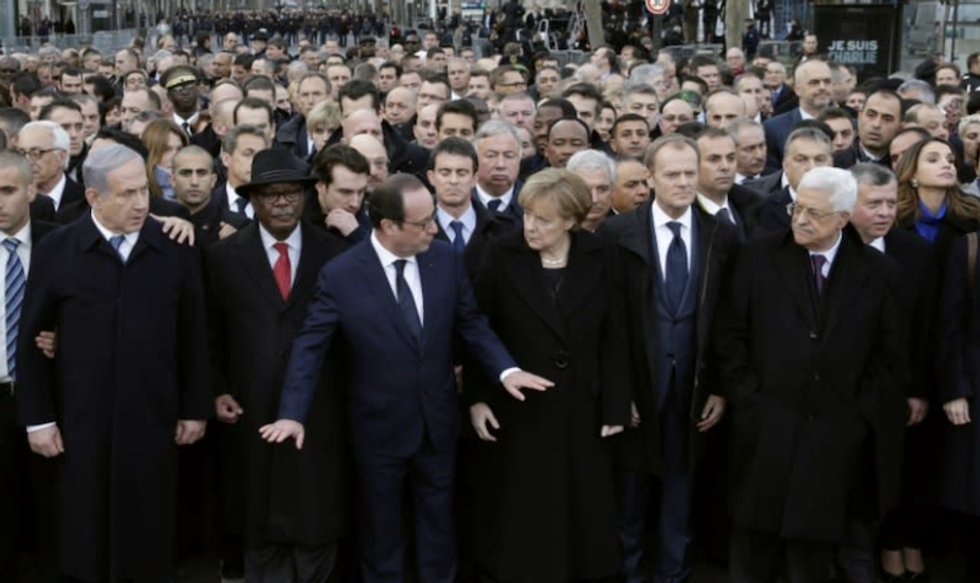Compare and Contrast: Los Angeles Fire Damage vs. Green New Deal Cost
The Los Angeles wildfires have so far claimed 1,300 structures and threatened 60,000 more, torching a total area larger than Manhattan. Analysts predict that the blaze could be the most expensive in U.S. history, costing billions of dollars in repairs across the city—but it didn’t have to be that way.Total economic losses for the inferno are predicted to reach nearly $50 billion, JPMorgan analyst Jimmy Bhullar told the Wall Street Journal, though they could continue to rise if the fires aren’t brought under control. Bhullar estimated that the price tag on insured losses would be more than $20 billion, nearly $8 billion more than the most destructive wildfire in California’s history, the 2018 Camp Fire in Butte County.Local authorities have acknowledged there is a serious lack of personnel and essential resources, such as water, to effectively combat the fire. But remedies to legitimately tackle the growing climate threat have sat on the table, sinking from inaction, for years.Vermont Senator Bernie Sanders’s Green New Deal proposed an $18 billion increase in national spending specifically to address the “more frequent and severe wildfires” plaguing the American West.“In order to be able to quickly and effectively respond to wildfires, we will expand the wildfire restoration and disaster preparedness workforce,” the proposal reads. “We will increase funding for firefighting by $18 billion for federal firefighters to deal with the increased severity and frequency of wildfires.”Sanders first unveiled the details of his radical agenda to fight climate change in 2019, after a cohort of progressive lawmakers in Congress outlined a new series of climate principles and goals for the nation. In March last year, Sanders and New York Representative Alexandria Ocasio-Cortez reintroduced the legislation. They were joined by 55 lawmakers in the House and seven senators, but the proposal was ultimately dismissed by Republicans and Democrats alike for its lofty objectives, with some critics hyperbolically mischaracterizing the policy. Arkansas Senator Tom Cotton falsely told conservative radio host Hugh Hewitt in 2019 that the proposal would confiscate cars and would force Americans to ride a light rail “powered by unicorn tears.” The same year, Wyoming Senator John Barrasso baselessly claimed that the Green New Deal would ban livestock and mark the end of ice cream, cheeseburgers, and milkshakes.But while Congress has failed to offer alternative solutions, the looming national crisis awaits—with an incoming Republican trifecta apparently set on killing tax credits for electric vehicles and spurring fossil fuel production on federally protected land.Meanwhile, Donald Trump’s transition team has already prepared executive orders for the president-elect to once again withdraw the U.S. from the Paris Agreement, the international climate treaty limiting greenhouse gas emissions. And Trump isn’t likely to offer much help to California while it rebuilds from the blaze, either—the forty-fifth president reportedly resisted sending wildfire aid to the Golden State in 2018 because the state voted Democratic.

The Los Angeles wildfires have so far claimed 1,300 structures and threatened 60,000 more, torching a total area larger than Manhattan. Analysts predict that the blaze could be the most expensive in U.S. history, costing billions of dollars in repairs across the city—but it didn’t have to be that way.
Total economic losses for the inferno are predicted to reach nearly $50 billion, JPMorgan analyst Jimmy Bhullar told the Wall Street Journal, though they could continue to rise if the fires aren’t brought under control. Bhullar estimated that the price tag on insured losses would be more than $20 billion, nearly $8 billion more than the most destructive wildfire in California’s history, the 2018 Camp Fire in Butte County.
Local authorities have acknowledged there is a serious lack of personnel and essential resources, such as water, to effectively combat the fire. But remedies to legitimately tackle the growing climate threat have sat on the table, sinking from inaction, for years.
Vermont Senator Bernie Sanders’s Green New Deal proposed an $18 billion increase in national spending specifically to address the “more frequent and severe wildfires” plaguing the American West.
“In order to be able to quickly and effectively respond to wildfires, we will expand the wildfire restoration and disaster preparedness workforce,” the proposal reads. “We will increase funding for firefighting by $18 billion for federal firefighters to deal with the increased severity and frequency of wildfires.”
Sanders first unveiled the details of his radical agenda to fight climate change in 2019, after a cohort of progressive lawmakers in Congress outlined a new series of climate principles and goals for the nation. In March last year, Sanders and New York Representative Alexandria Ocasio-Cortez reintroduced the legislation. They were joined by 55 lawmakers in the House and seven senators, but the proposal was ultimately dismissed by Republicans and Democrats alike for its lofty objectives, with some critics hyperbolically mischaracterizing the policy.
Arkansas Senator Tom Cotton falsely told conservative radio host Hugh Hewitt in 2019 that the proposal would confiscate cars and would force Americans to ride a light rail “powered by unicorn tears.” The same year, Wyoming Senator John Barrasso baselessly claimed that the Green New Deal would ban livestock and mark the end of ice cream, cheeseburgers, and milkshakes.
But while Congress has failed to offer alternative solutions, the looming national crisis awaits—with an incoming Republican trifecta apparently set on killing tax credits for electric vehicles and spurring fossil fuel production on federally protected land.
Meanwhile, Donald Trump’s transition team has already prepared executive orders for the president-elect to once again withdraw the U.S. from the Paris Agreement, the international climate treaty limiting greenhouse gas emissions.
And Trump isn’t likely to offer much help to California while it rebuilds from the blaze, either—the forty-fifth president reportedly resisted sending wildfire aid to the Golden State in 2018 because the state voted Democratic.



